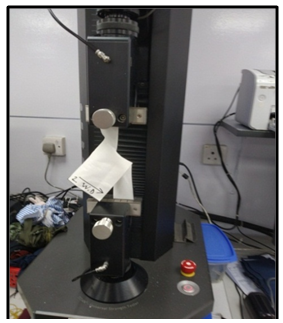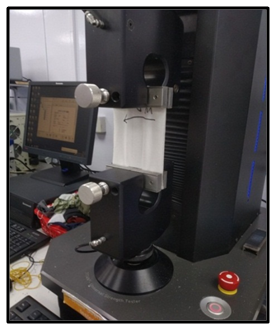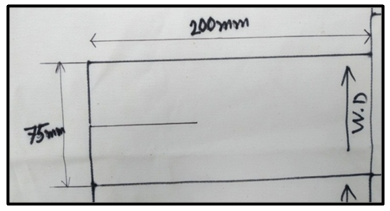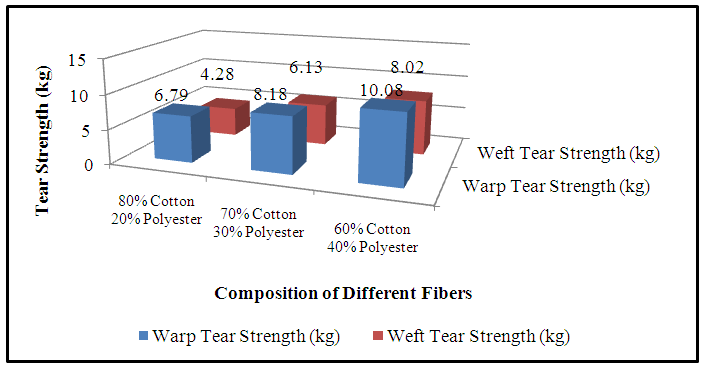-
Paper Information
- Paper Submission
-
Journal Information
- About This Journal
- Editorial Board
- Current Issue
- Archive
- Author Guidelines
- Contact Us
International Journal of Clothing Science
2019; 6(1): 1-6
doi:10.5923/j.clothing.20190601.01

Relationship in between Strength and Polyester Content Percentage of Cotton Polyester Blended Woven Fabrics
Shariful Islam 1, Shaharia Ahmed 2, Md Arifuzzaman 1, AKM Saiful Islam 1, Shilpi Akter 3
1Department of Textile Engineering, Faculty of Science and Engineering, City University, Dhaka, Bangladesh
2SGS Bangladesh Limited, Dhaka, Bangladesh
3Department of Fabric Engineering, Faculty of Textile Engineering, Bangladesh University of Textiles, Dhaka, Bangladesh
Correspondence to: Shariful Islam , Department of Textile Engineering, Faculty of Science and Engineering, City University, Dhaka, Bangladesh.
| Email: |  |
Copyright © 2019 The Author(s). Published by Scientific & Academic Publishing.
This work is licensed under the Creative Commons Attribution International License (CC BY).
http://creativecommons.org/licenses/by/4.0/

The aim of this research is to investigate the strength properties of cotton polyester blended woven fabrics of different fiber content. Strength is directly related to the polyester content percentage of the cotton polyester blended woven fabrics. This research proved that strength is enhanced when the polyester content proportion is enhanced in the fabrics and vice versa. Three different nomenclatures of cotton polyester blended woven fabrics of different composition were collected from fabric mill and the required strength tests were carried out in agreement with ASTM D2261 Standard (tear) and ASTM D5034 Standard (tensile). It is a practice based research and the findings may be beneficial to the personnel involved in textile industries who are responsible for the manufacture of cotton polyester blended woven fabrics and to control of their strength properties. This research proved that the values of strength depend on the polyester composition percentage of cotton polyester blend in the fabrics and it opened suitable ways for the intellectuals to further study in this field.
Keywords: Fiber Composition, Blended Fabrics, Stability, Permeability, Breathability, Resilience, Water Resistance etc
Cite this paper: Shariful Islam , Shaharia Ahmed , Md Arifuzzaman , AKM Saiful Islam , Shilpi Akter , Relationship in between Strength and Polyester Content Percentage of Cotton Polyester Blended Woven Fabrics, International Journal of Clothing Science, Vol. 6 No. 1, 2019, pp. 1-6. doi: 10.5923/j.clothing.20190601.01.
Article Outline
1. Introduction
- There is a great importance of this research in the textile and clothing engineering as the task of adjusting strength of cotton polyester blended woven fabrics is always important.It is natural that manmade polyester fibers are stronger than natural cotton fibers due to its chemical constituent. If the polyester content percentage in the fabrics would reduce, the strength properties would also be reduced.Different scholars worked related to this subjected matter at different times where literature review revealed different results. Some of which were similar and others were widely dissimilar.Shariful et al reported that heat setting had some direct consequences on the shrinkage properties of cotton spandex woven fabrics [1]. Application of temperature reduced the problems of shrinkage.Shariful et at experimented that optimized strength of cotton spandex woven fabrics could be obtained by proper heat setting with some adjusted industrial setting [2].Shariful et al proved that heat setting optimized the elastic performances of cotton spandex woven fabrics. Application of precious temperature enhanced the elastic performance like stretch, growth and recovery of cotton spandex woven fabrics [3].Shariful et al also experimented that the sustainable natural fiber can reduce the noise level inside the vehicles. Sustainable natural fibers are echo friendly and they are increasingly used inside automobiles to reduce sound pollution [4].Shariful et al also reported that strength property of fabrics is increased when the polyester content percentage is increased. Polyester fibers are composed of various manmade ingredients which have long chain polymer. Polyester composition in the fabrics improves various resistance properties of fabrics [5].Razali et al experimented that increasing the polyester content percentage in an elastic fabric was a good practice to avoid creasing problem and also it guaranteed good abrasion resistance properties and pilling performances of fabrics [6].Tezel et al reported that if the cotton percentage in the blends is higher, the shrinkage will also be higher and also if the percentage of spandex in the cloths is higher, the shrinkage will also be higher [7].Sarkeshick et al reported that cotton spandex fabric shrinks more when it is taken from the manufacturing area just after weaving or knitting. Cotton spandex fabrics would show more shrinkage property when they were in the wet processing zones. After making the cloths they would shrink less, as in the wet processing zones, they shrank as much as they could before [8].Gokarneshan et al experimented that cotton fibers would shrink in the contact of water but spandex would shrink in the contact of temperature either in the dryer or in the stenter machine with the blast of hot air blow or in hot water [9].Tian et al also reported that spandex would shrink less in the water of room temperature, but it would start shrinking more when it would be washed in the hot water [10].Chen et al experimented that shrinkage dependent on the percentage of cotton in the material. If the percentage of polyester in a blend was more, the shrinkage would be less because polyester did not shrink in normal water [11].Chen et al reported that shrinkage would be more in the higher percentage of cotton of the cotton spandex cloths, but garments would be damaged more if higher temperature is applied on the higher percentage of spandex [12].Liu et al experimented that polyester would not shrink in water as it did not absorb water. Polyester always showed the property like resistance to shrinkage [13].Hasan et al also experimented that polyester was not made up with organic fibers, rather they were made up with manmade materials, where cellulose was absent. So, there was no chance for polyester to shrink when it came in contact of water [14].Ramasamy et al reported that in case polyester was not heat set properly during production process, on that time, polyester might shrink in the dryer with temperature but not in water or in steam compartment. Higher temperature in the dryer might help to shrink the polyester fiber slightly [15].Das et al experimented that spandex yarns had haphazardness in the structure, proper heat setting could give the yarns a permanent rigid structure by changing the internal structure of spandex in yarns [16].Uttam et al proved that increasing the percetage of polyester in the blend with cotton also increased the abrasion resistances properties and the pilling performances of fabrics [17].Uttam et al proved that in the blend of cotton polyester fabrics, very little percentage of spandex like 2 to 3% is sufficient enough to enhance the elastic performance of fabrics [18].The present researcher is conducted to experiment the strength properties of cotton polyester blended woven fabrics. Different cotton polyester woven fabrics of different composition were used as mentioned in table 1 to conduct the experiment and the required strength tests. This experiment was practiced based and the findings were benifical to the personel involved in the textile industries who were responsible to control the strength properties of cotton polyester woven fabrics.
2. Materials and Method
2.1. Materials Used
- Cotton polyester blended woven fabrics were the fundamental raw materials for this research. Different types of cotton polyester woven fabrics with different composition were used in this research as shown in table 1. Finished raw fabrics were collected from fabric mills just after finishing is done and tests were carried out.
|
2.2. Tear Strength Measuring Method
- Tear strength was carried out in accordance with ASTM (American Society for Testing and Materials) D2261 Standard [19].
2.3. Tensile Strength Measuring Method
- Tensile strength was carried out in accordance with ASTM D5034 standard [20].
2.4. Equipment Used in this Research
- 2.4.1 Tear testing equipment: Tearing strength of the specimen was conducted with ″Titan 10 Universal Strength Tester″ of James Heal of UK in agreement with ASTM D2261 Standard. One part of the cut edge was clinched into the upper jaw and the other side was clinched into the lower jaw. The jaws moved separately at a persistent rate until the fabric started to tear. Foot pedals were used to open and close the jaws. Considering the nature of the sample, the tearing force was shown as a peak or a series of peaks. The maximum peaks seemed to reveal the strength of the specimen to tear. Fabric should be conditioned for 24 hours with temperature of 20±2C and relative humidity of 64±4% in the testing laboratory in accordance with ASTM D2261 standard to reach moisture equilibrium in the atmosphere before testing. Figure 1 showed a tear testing equipment [21].
 | Figure 1. Titan 10 Universal Tear Strength Tester, James Heal, UK, 2010 |
 | Figure 2. Titan 10 Universal Tensile Strength Tester, James Heal, UK, 2010 |
2.5. Experiment of Tear Strength
- To accomplish these experiments and the required tear strength tests three different types of cotton polyester blended woven fabrics with different fiber content were used as specified in table 1. Using a measurement tape ″75mm×200mm″ rectangular size fabrics were cut from the original finished fabrics and were placed into the ″Titan 10 Universal Strength Tester″ to measure the tear strength of the cotton spandex fabric in ASTM D2261 Standard. Three samples were cut in both warp and weft way for tear testing from each type. Figure 3 showed the arranged sample for measuring tear strength.
 | Figure 3. Sample preparation for tear strength testing |
2.6. Experiment of Tensile Strength
- To accomplish these experiments and the required tensile strength tests three different types of cotton polyester blended woven fabrics with different fiber content were used as specified in table 1. Using a measurement tape ″100mm×150mm″ rectangular size samples were cut and placed in ″Titan 10 Universal Strength Tester″ to measure the tensile strength of the fabric in accordance with the ASTM D5034 Standard. Three rectangular size samples were cut in both warp and weft way for the experiment from each type. Figure 4 showed the arranged sample for measuring tensile strength.
 | Figure 4. Sample preparation for tensile strength testing |
3. Result and Discussion
- Enhanced proportion of polyester fiber composition in the fabrics exhibited the higher strength values. Experiments were carried out in three types of samples as mentioned in table 1 of various fibers content and showed the significances in figure 5 and in figure 6.
3.1. Result of Tear Strength
- It was seen from the figure 5 that for the fabric of fiber composition of 80% cotton and 20% polyester the warp tear strength was exposed 6.79 kg and weft tear strength was exposed 4.28 Kg. For the fabric of fiber composition of 70% cotton and 30% polyester the warp tear strength was exposed 8.18 kg and weft tear strength was exposed 6.13 Kg. For the fabric of fiber composition of 60% cotton and 40% polyester the warp tear strength was exposed 10.08 kg and weft tear strength was exposed 8.02 Kg. It was seen from the figures that the enhanced percentage of polyester content in the fabircs exposed the higher values of tear strength.
 | Figure 5. Tear strength of different fiber content |
3.2. Result of Tensile Strength
- It was seen from the figure 6 that for the fabrics of fiber composition of 80% cotton and 20% polyester the warp tensile strength was exposed 66.62 kg and weft tear strength was exposed 46.32 Kg. For the fabric of fiber composition of 70% cotton and 30% polyester the warp tensile strength was exposed 74.34 kg and weft tear strength was exposed 51.25 Kg. For the fabrics of fiber composition of 60% cotton and 40% polyester the warp tensile strength was exposed 81.98 kg and weft tensile strength was exposed 57.39 Kg. It was seen from the figures that the enhanced percentage of polyester content in the fabircs exposed the higher values of tensile strength.
 | Figure 6. Tensile strength of different fiber content |
4. Conclusions
- It was seen from the research that strength was directly proportional to the polyester content percentage of the cotton polyester blended woven fabrics. The more the polyester content percentage in the blend was, the better the strength value was. Enhnaced percentage of polyester content in the blend results in higher strength. The advantages of blending the fiber content were like blending of individual characteristics of each fibers to get some constant features in the blended fabrics. The natural cotton fibers had some tendency of breathability, absorbency which could provide good feel. Conversely, artificial polyester fibers had some tendency like resistance to water and stability. Blending of cotton polyester fibers was like bringing the versatile property like comfort, strength, permeability and breathability etc. If the percentage of cotton portion was more in the blend, then the breathability, absorbency and comfort were more. On the other hand, some required properties like strength and durability were increased in the blend when polyester percentage was increased that was proved in this research.
 Abstract
Abstract Reference
Reference Full-Text PDF
Full-Text PDF Full-text HTML
Full-text HTML